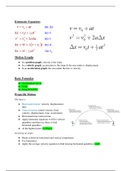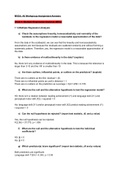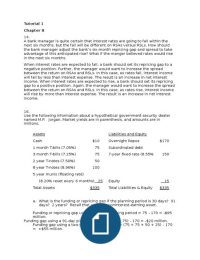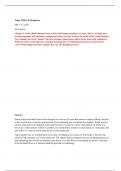BTEC LEARNER ASSESSMENT SUBMISSION AND DECLARATION
When submitting evidence for assessment, each learner must sign a declaration confirming that the
work is their own.
Learner Name: M Gorji
Assessor Name: S. Kirk
BTEC Programme Title: Pearson BTEC Level 3 Extended Certificate in
Applied Science
Pearson BTEC Level 3 National Foundation
Diploma in Applied Science
Pearson BTEC Level 3 National Diploma in
Applied Science
Pearson BTEC Level 3 National Extended
Diploma in Applied Science
Unit or Component Number and Title:
Unit 11: Genetics and Genetic engineering
Assignment Title: Human inheritance and predicting genetic traits
Date Assignment Submitted:
Please list the evidence submitted for each task. Indicate the page numbers where the evidence can be
found or describe the nature of the evidence (e.g. video, illustration).
Assignment task reference Evidence submitted
Task 1 Write up of experiment into genetic crosses
comparing expected outcomes with observed
outcomes
Write up of predicted outcomes of a range of
genetic crosses using punnet squares and
appropriate technical language
1
BTEC Assignment Brief v1.0
BTEC Internal Assessment QDAM January 2015
, Learner declaration
I certify that the work submitted for this assignment is my own. I have clearly referenced any
sources used in the work. I understand that false declaration is a form of malpractice.
Learner signature: Date:
BTEC Assignment Brief
Pearson BTEC Level 3 Extended Certificate in Applied Science
Pearson BTEC Level 3 National Foundation Diploma in Applied
Science
Qualification
Pearson BTEC Level 3 National Diploma in Applied Science
Pearson BTEC Level 3 National Extended Diploma in Applied
Science
Unit number and title
Unit 11: Genetics and Genetic engineering
Learning aim(s) (For C: Explore the principles of inheritance and their application in
NQF only) predicting genetic traits
Human inheritance and predicting genetic traits
Assignment title
s.kirk
Assessor
29.10.20
Issue date
12.11.20
Hand in deadline
As a trainee lab technician working for a medical research company,
you must be able to predict patterns of inheritance and analyse
correlations between expected and observed results. Your company
offer work placements for the sixth form students. You have been
Vocational Scenario or
asked to help the sixth form students understand how an expected
Context
ratio of inheritance can be different to an observed ratio and how
statistical tests can determine if this difference is significant, caused
by something or if it is just due to chance.
Task You are required to make valid predictions of patterns of
monohybrid and dihybrid inheritance and then carry out practical
2
BTEC Assignment Brief v1.0
BTEC Internal Assessment QDAM January 2015
, investigations to test your predictions. You must analyse your
data to explain the correlation between the observed patterns of
inheritance and the predictions made.
You must investigate the inheritance of genetic conditions and
apply Mendel’s laws of inheritance to non-affected individuals,
carriers and affected individuals.
In order to do this, you must:
• Follow instructions to competently carry out
investigations to collect valid and reliable data for one
monohybrid and one dihybrid phenotypic ratio. You should
demonstrate a very low error rate and gain results close to
the expected.
• Produce a write up of your investigations.
• Use the data from your investigations, supplemented by
data for peers (if necessary), to effectively apply the chi-
squared test to analyse the correlation between the
observed and expected phenotypic results.
You need to identify if the ratios obtained are statistically
significant or due to chance.
• Predict the outcomes of crosses between non-affected,
affected and carriers of genetic disorders. This must
include considering the inheritance of a monohybrid
disorder and a dihybrid disorder but does not have to be
limited to humans.
• You must use the data from your investigations and
researched case studies to make these predictions and you
must include an explanation of why the observed ratio for
each example might not be exactly as would be expected.
• Analyse data from case studies to explain the genotypic
and phenotypic ratios for crosses involving genetic
conditions in humans or animals.
The case studies must include monohybrid and dihybrid
conditions and must consider the outcomes of crosses
involving unaffected, affected and carrier individuals.
Conditions to consider could include Huntington’s disease,
sickle cell anaemia or cystic fibrosis and linked genes (e.g.
colour blindness or haemophilia).
Use genetic diagrams (e.g. Punnett squares) to represent
the genetic crosses.
3
BTEC Assignment Brief v1.0
BTEC Internal Assessment QDAM January 2015










